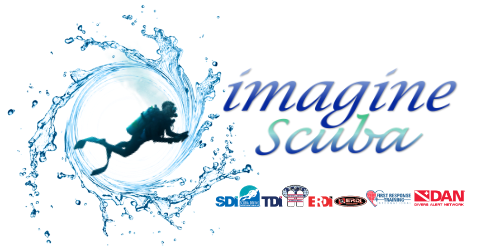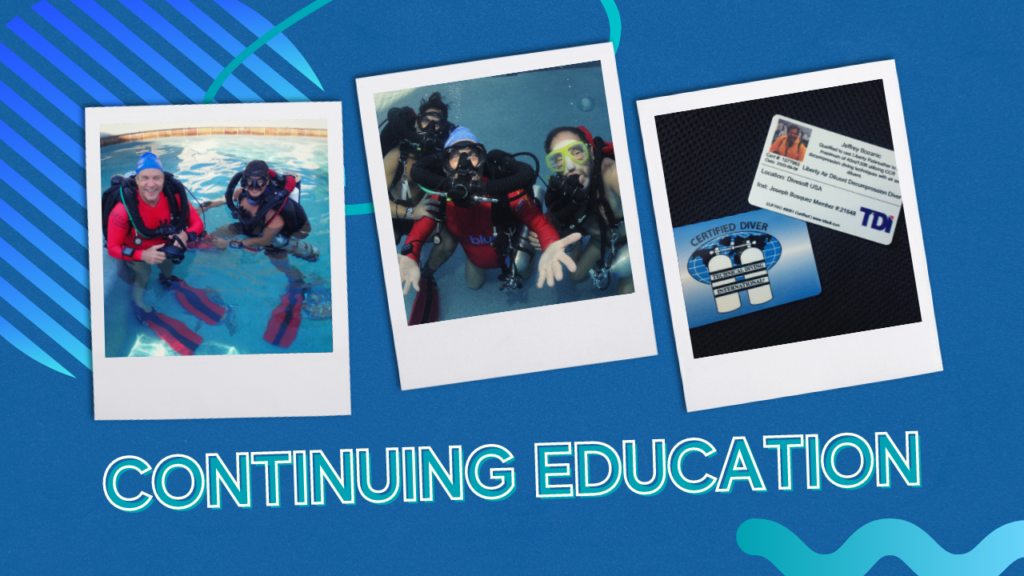After years of dreaming about it, you have succeeded! You’ve completed your training… and have your scuba certification card. Congratulations! Now what??
For some of you, you will hang up your fins. The grand adventure is over. And that is a complete shame!
For others, you will seek help and guidance, intrigued by the environment beneath the surface, but recognizing you have limitations and a lot to learn.
And for the remainder, it is an opportunity to jump in with both feet, literally plunging in with water over your head, and beginning to accumulate experience and knowledge. It is the beginning of a lifelong adventure!
Regardless of the group into which you fall, whether it is an occasional interest or an enduring passion, you would benefit from continued education in diving. No matter how much experience you accrue, there is always a class or program in which you can enroll and in which you would grow.
“Continuing education,” you think, “every professional in the industry says that, but they just want me to spend more money with them. I have over 50 (or 500, or 5,000) dives under my belt, I don’t really need that!”
I am here to tell you that you are wrong.
I started diving in 1972, when I was 15 years old. I have been diving for nearly 50 years now. (God, that makes me sound OLD!!) Few would argue that I am an experienced diver. 5,226-lifetime dives. 5,333 hours underwater in a wide variety of open water conditions. Dive instructor. Course Director. Author of several diving textbooks and hundreds of articles about diving. Even the senior technical editor of the NOAA Diving Manual.
Yet, I still take diving courses.
Since I learned to dive, I have taken 63 different diving certification courses. In college, I have literally hundreds of course credit hours in subjects related to diving, education, and marine environments. I have participated in hundreds of diving workshops and seminars, many as a lecturer or presenter, and all of them as a willing and eager learning participant. On average, I probably participate in 4-5 continuing education opportunities annually.
Allow me to share a recent course.
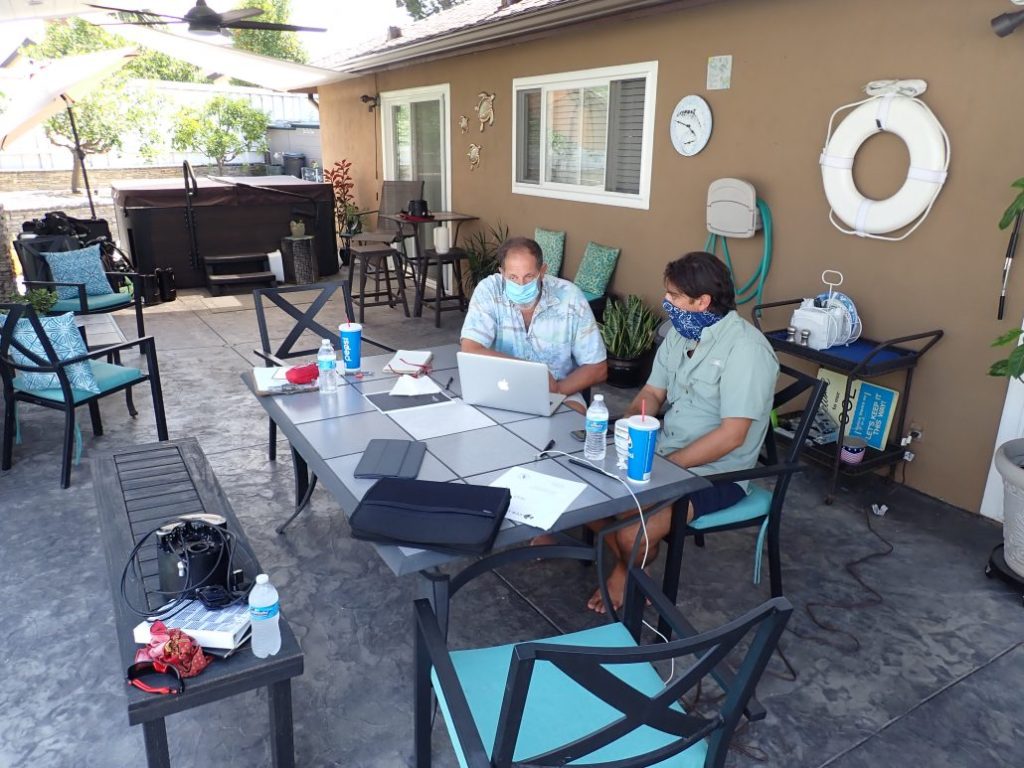
The course was a certification program on the Divesoft Liberty Light rebreather, taught by TDI Instructor Joseph Bosquez (TDI 21648). At the time, I had already logged over 2,500 hours on dozens of rebreathers and had penned Mastering Rebreathers, arguably the most referenced text on the topic. Why would I enroll in a class on a rebreather that is very similar to many others upon which I was already trained? Quite simple. Joe knew more about the unit than I did.
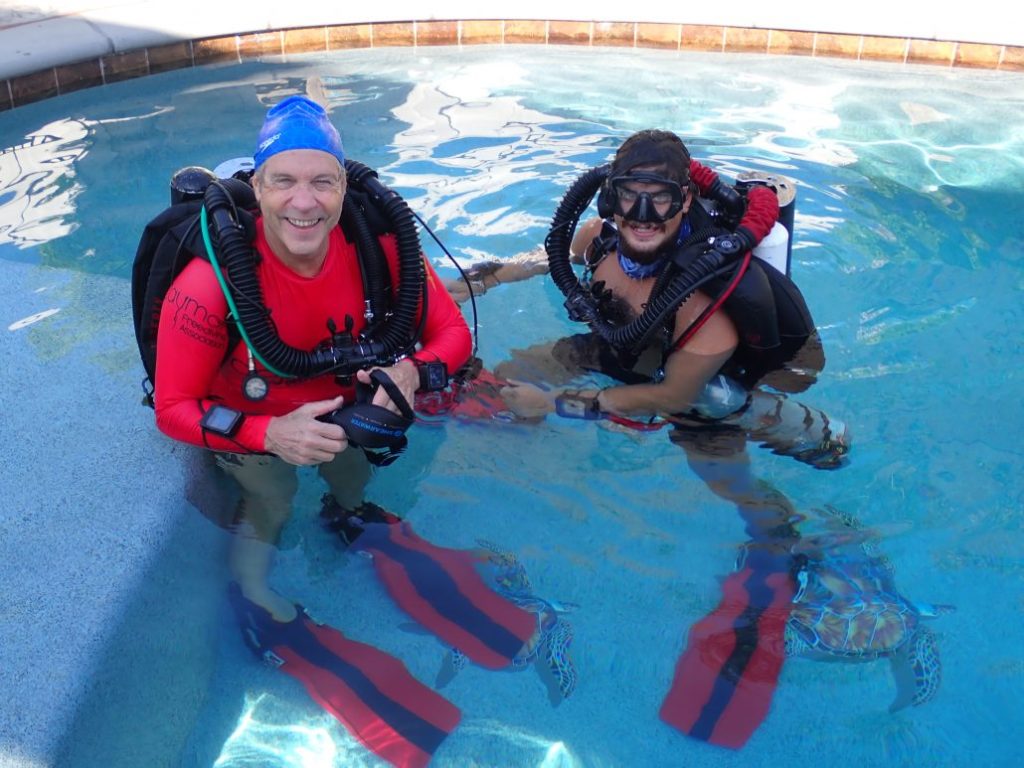
Also taking the class with me was Michael Menduno. Michael is a long-time friend. We first met when he was the founding editor of AquaCorps, the first diving periodical to focus solely upon what was, at the time, the fledgling technical diving community. This was the first time in many years that we had an opportunity to spend time together.

Training followed the general structure of most dive certification classes: lectures and academic content, pool training, followed by open water experience, and demonstration of skills learned. While much of the general material was a review for me, it never hurts to see how another professional explains concepts. I have dramatically improved my instructional skills by emulating the strengths of other professional dive instructors. (Yes, I copy them. The sincerest form of flattery, they say!)
As always, for me, the most enjoyable part of the class was the open water dives. We dove from the shore in Laguna Beach, California, at a site I have dove hundreds of times. That does not detract from the dive. For me, part of the enjoyment was working with the new rebreather, building muscle memory, and fine-tuning how the unit fit and carried. It is a joy that carries forward to this day, becoming competent on something new.
We also found a bit of rope sticking up out of the sand. “What is this?” I wondered. After 20 minutes of digging in the sand, first with our hands and then with an old scallop shell, Joe and I found the end of the line tied to a concrete block about three feet below the sand’s surface. Someone’s old makeshift anchor. Not exciting in itself, but still, the thrill of the hunt in discovering something new is a part of the dive adventure that I love!
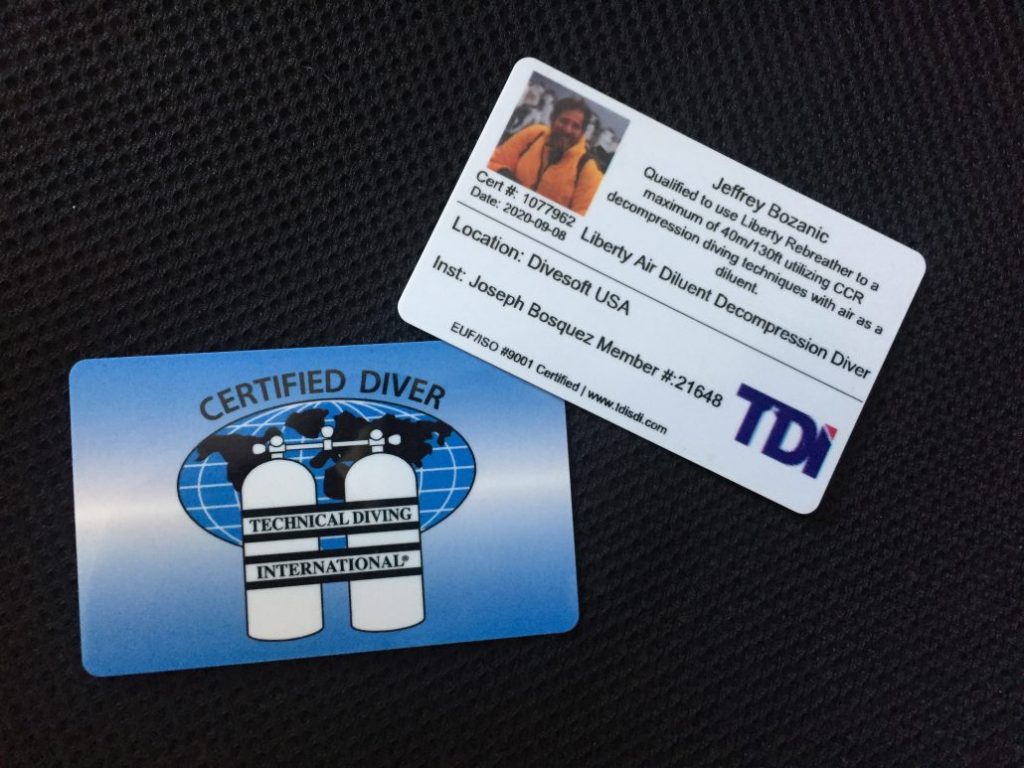
I have to confess, taking the class was a lot of fun! Besides the camaraderie of hanging out with an old friend, I formed new friendships with Joe and Matej Fischer (also from Divesoft, who was helping Joe with the class). And, most important of all, I learned more about diving, increasing my knowledge base and becoming a better diver for it!
So, it does not matter how much (or how little) dive experience you have, there is always something new to learn. And that, in itself, is part of the fun!

